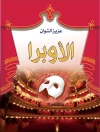The universal act of dressing—shared by both men and women, young and old, rich and poor, minority and majority—has shaped human interactions, communicated hopes and fears about the future, and embodied what it means to be Somali. Heather Marie Akou mines politics and history in this rich and compelling study of Somali material culture. Akou explores the evolution of Somali folk dress, the role of the Somali government in imposing styles of dress, competing forms of Islamic dress, and changes in Somali fashion in the U.S. With the collapse of the Somali state, Somalis continue a connection with their homeland and community through what they wear every day.
สารบัญ
Acknowledgments
Timeline of Events
1 The Political Symbolism of Dress
2 The Origins of Somali Dress—Prehistory to 1800
3 A Class of Civilizations—1800 to 1945
4 Dressing the Nation—1945 to 1991
5 Dress in a Time of Extreme Change—1991 to 2010
6 The Relevance of History
Glossary
Appendix A – Stamps issued in Somalia, 1960-1980
Bibliography
Index
เกี่ยวกับผู้แต่ง
Heather Marie Akou is Assistant Professor in the Department of Apparel Merchandising and Interior Design, Indiana University Bloomington. Her work appears in Contemporary African Fashion (IUP, 2010) and Fashioning Africa (IUP, 2004).












